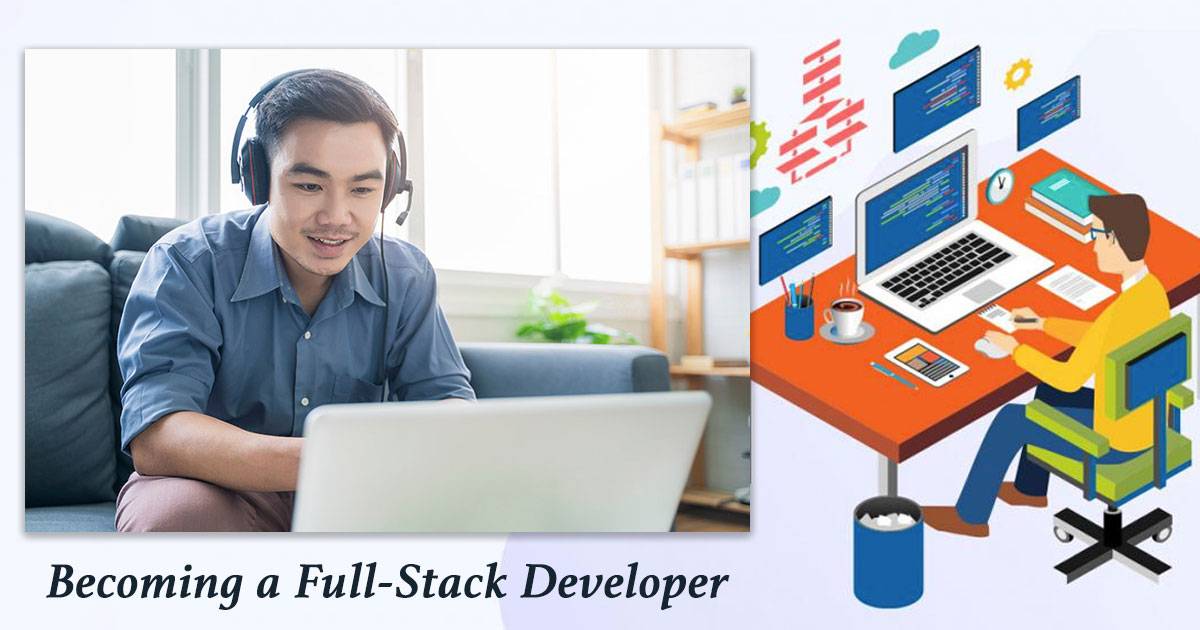Become a Full-Stack Developer: Courses and Expected Timeline

Becoming a full-stack developer is a popular goal for many aspiring tech professionals. Full-stack developers are skilled in both front-end and back-end development, enabling them to create and manage complete web applications. But how long does it take to become a full-stack developer?
The journey varies depending on the learning path you choose, your prior experience, and the amount of time you can commit to studying. This guide explores the timeline and educational steps required to become a full-stack developer, helping you understand what to expect along the way.
What is a Full-Stack Developer?
A full-stack developer is proficient in all layers of web development, including both the client side (front-end) and the server side (back-end). They handle everything from designing user interfaces to managing server databases, making them versatile in creating and maintaining web applications. This role requires a broad knowledge of various programming languages and technologies, enabling developers to work on multiple aspects of a project.
Full-stack developers are responsible for ensuring that an application functions smoothly from the user interface to the server. They integrate different technologies to ensure seamless operation and are crucial for the end-to-end delivery of web solutions. Their expertise allows them to address issues that may span across different areas of development, making them valuable assets to any tech team.
Benefits of Becoming a Full-Stack Developer
Choosing a career as a full-stack developer offers numerous advantages:
- Versatility: Full-stack developers can handle a wide range of tasks, making them highly adaptable in various project roles.
- Increased Job Opportunities: With skills in both front-end and back-end development, full-stack developers are in high demand across the tech industry.
- Higher Salary Potential: Their broad skill set often leads to higher earning potential compared to developers specializing in only one area.
- Greater Control Over Projects: Being able to work on both ends of development allows full-stack developers to have more control over the entire project lifecycle.
- Enhanced Problem-Solving Skills: Their ability to understand and address issues across the stack enhances their problem-solving capabilities.
What Does the Timeline Look Like?
The timeline to become a full-stack developer varies significantly based on the learning method and individual pace. Generally, intensive bootcamps offer a fast-track route, often completing in 12 to 24 weeks. These programs are designed to equip you with the essential skills needed for a career in full-stack development in a condensed timeframe.
For those pursuing a more traditional route, such as a degree in computer science or a related field, the process can take several years. However, many choose a hybrid approach, combining formal education with self-paced online courses and practical experience. The total time required can range from six months to a few years, depending on your previous experience and the depth of knowledge you wish to acquire.
Courses to Take
When aiming to become a full-stack developer, a variety of courses can help you build the necessary skills. Here’s an overview of the key areas to focus on:
Front-End Development
Front-end development involves creating the parts of a website or application that users interact with directly. Courses in HTML, CSS, and JavaScript are essential for mastering this aspect of development. Learning these languages helps you design and implement visually appealing and interactive user interfaces.
Git and GitHub
Git and GitHub are crucial for version control and collaborative coding. Courses in these tools teach you how to manage changes to your codebase and work efficiently with other developers. Understanding version control systems is key to maintaining an organized and efficient development process.
Back-End Development
Back-end development focuses on the server-side of web applications. Courses in server-side languages such as Node.js or Python, along with frameworks like Express.js, are key to managing data and server operations. This aspect involves handling server requests, database interactions, and application logic.
HTTP and REST
Understanding HTTP and RESTful APIs is important for enabling communication between your front-end and back-end systems. Courses on these topics cover how to create and manage APIs that allow different parts of your application to interact seamlessly. This knowledge is crucial for building functional web applications.
Web Architecture
Web architecture involves the design and structure of web systems. Learning about different architectures helps in creating scalable and efficient applications. Courses on web architecture cover topics such as server configuration, load balancing, and the design of robust web systems.
Database Storage
Courses in database management systems, such as SQL or MongoDB, are essential for handling data storage and retrieval in your applications. Understanding how to design and manage databases ensures that your applications can efficiently store and access the data they need.
Basic Web Design
Basic web design courses teach you the principles of creating visually appealing and user-friendly interfaces. This knowledge helps ensure that your applications are not only functional but also engaging and accessible to users. Courses often cover design principles, user experience (UX), and responsive design techniques.
Version Control Systems
Version control systems, like Git, are used to track changes and collaborate on code. Proficiency in these tools ensures that your development process is organized and efficient. Courses on version control teach you how to manage code changes, resolve conflicts, and work with collaborative tools like GitHub or Bitbucket.
Your Path to Becoming a Full-Stack Developer
Becoming a full-stack developer requires a combination of education, practice, and dedication. Whether you choose a bootcamp, an online course, or a traditional degree program, understanding the time commitment and course requirements is crucial. By focusing on the key areas of full-stack development, you can build a solid foundation for a successful career in this versatile and in-demand field. With the right resources and commitment, you can achieve your goal and become a proficient full-stack developer.
